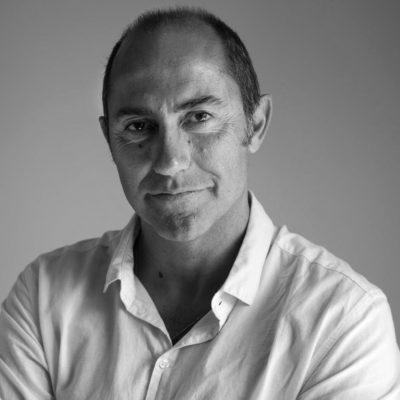Vídeo-Régimen. Coleccionistas en la era audiovisual
13 February — 11 May 2015

LOOP Barcelona, in collaboration with Museo Lázaro Galdiano, presents 'Vídeo-Régiman. Coleccionistas en la era audiovisual' (VIDEO-REGIME. Collectors in the Audiovisual Era), curated by Carles Guerra and included in the focus that LOOP 2015 dedicates to the collectors as central players within today’s art system.
LOOP Barcelona together with the artist, critic and independent curator Carles Guerra have assembled a selection of video pieces by leading international artists from the most important private collections in Spain that show the multiple uses of video art, from documentary practices to graphic records of artistic actions. The exhibition features the video works along with recorded interviews in which the collectors talk about their experience of collecting video art. The show is also accompanied by a publication and hosts a programme of talks.
Video’s assimilation by the art establishment has been quick and intense, mirroring what happened to photography in the late 1980s and early 90s. Just as photography soon found itself being measured by the valuation standards of painting, video has also been rapidly absorbed into the art market. Moreover, the technical requirements of video art are changing the characteristics of new museum projects. The video pieces and recorded conversations reveal the intricacies of assimilating the unique features of this medium, which burst onto the art scene in the 1970s. They are shown side by side in the galleries of the Museo Lázaro Galdiano sharing the same audiovisual format and suggesting that the artistic production associated with this medium and the debates surrounding it flow through the same channels. The holdings of the Museo Lázaro Galdiano set the stage for a collision of aesthetic regimes that highlights some of the latest changes in the field of art, where the works promote alternative timescales and new conceptions of heritage that increasingly verge on an immaterial economy.
The creations of the artists Allora & Calzadilla, Ignasi Aballí, Francis Alÿs, Erick Beltrán, Patricia Dauder, William Doherty, Mario García Torres, Douglas Gordon, Emily Jacir, Gilda Mantilla & Raimond Chaves, Paul McCarthy, Bruce Nauman, Itziar Okariz, Javier Peñafiel, Allan Sekula, Fiona Tan, Zhou Tao and Eulàlia Valldosera are closely related to the collections they belong to, which act as vessels that openly influence the value and original meaning of each piece. Through them, some advocate different forms of activism while others represent more personalised forms of collecting. The economy of access to video has facilitated the creation of heritage collections whose storage and distribution logistics are much more advantageous than those of other types of artistic objects.
In their interviews, we discover how collectors in the audiovisual era deal with this new kind of artistic object, whose timescale, experience and definition of ownership is different from that required by works of art in the past and that imply a new form of cultural consumption. The collectors who have contributed to this project are Alicia Aza, Joan Bonet, Roser Figueras & Josep Inglada (Cal Cego), Ella Fontanals-Cisneros (The Ella Fontanals-Cisneros Collection), Josep Maria Lafuente, Estefanía Meana, Han Nefkens (H+F Collection), Ángel & Clara Nieto, Enrique Ordóñez (Colección Ordóñez Falcón de Fotografía), Fernando Panizo & Dorothy Neary, Emilio Pi & Helena Fernandino, Carlos Rosón (Fundación RAC), Teresa Sapey, Sisita Soldevila (Colección Ámister Hotel), Jaime Sordo, Julio Sorigué & Josefina Blasco (Fundación Sorigué), Carlos Vallejo & Wendy Navarro (CV Colección), Juan Várez, and Ernesto Ventós (Colección olorVisual).
Carles Guerra talks about the exhibitions [Spanish]
List of exhibitied works
Related pages
![Interview with Enrique Ordóñez, Colección COFF, San Sebastián [Spanish]](https://loop-barcelona.com/wp-content/uploads/2016/07/enrique-ordoñez-min-300x169.jpg)
Video conferences
Interview with Enrique Ordóñez, Colección COFF, San Sebastián [Spanish]
![Interview with Sisita Soldevila, Colección Ámister Hotel, Barcelona [Spanish]](https://loop-barcelona.com/wp-content/uploads/2016/07/sisita-soldevila-video-regimen-loop-barcelona-min-300x169.jpg)
Video conferences
Interview with Sisita Soldevila, Colección Ámister Hotel, Barcelona [Spanish]
![Interview with Han Nefkens, H + F Collection, Barcelona [Spanish]](https://loop-barcelona.com/wp-content/uploads/2016/07/han-nefkens-video-regimen-loop-barcelona-300x169.jpg)
Video conferences
Interview with Han Nefkens, H + F Collection, Barcelona [Spanish]
![Interview with Montse Badia and Roser Figueras, Cal Cego, Barcelona [Spanish]](https://loop-barcelona.com/wp-content/uploads/2016/07/cal-cego-montse-badia-video-regimen-carles-guerra-min-300x169.jpg)
Video conferences
Interview with Montse Badia and Roser Figueras, Cal Cego, Barcelona [Spanish]

Venues
Museo Lázaro Galdiano

Publications
Video-Régimen. Coleccionistas en la era audiovisual.

Professionals
Carles Guerra
